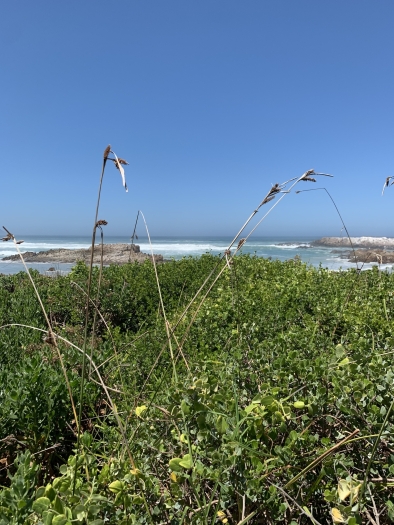Swamp Sedge
(Carex clavata)
Swamp Sedge (Carex clavata)
/
/

Dave Richardson
CC BY 4.0
Image By:
Dave Richardson
Recorded By:
Copyright:
CC BY 4.0
Copyright Notice:
Photo by: Dave Richardson | License Type: CC BY 4.0 | License URL: http://creativecommons.org/licenses/by/4.0/ | Rights Holder: Dave Richardson | Publisher: iNaturalist | Date Created: 2021-01-22T09:38:29Z |

























Estimated Native Range
Summary
Carex clavata, commonly known as Swamp Sedge, is an evergreen perennial grass native to wetlands, including marshes, fens, and peat bogs, primarily in the Cape Province region of South Africa. It typically grows to a height of 12-24 inches (30-60 cm) with a similar spread, forming dense clumps of narrow, arching leaves. The plant produces inconspicuous brown flower spikes in late spring to early summer, which are more interesting for their texture than for showy color.
Swamp Sedge is valued for its ability to thrive in wet conditions and is often used in rain gardens, water features, and as a ground cover in damp areas of the landscape. It is also suitable for erosion control on streambanks and slopes. Carex clavata requires consistently moist to wet soil and can tolerate occasional flooding. It is adaptable to a range of soil types, provided they are well-draining. While it prefers full sun to part shade, it can also grow in shadier conditions. Gardeners should be aware that in some conditions, it can spread vigorously and may require management to prevent it from becoming invasive.CC BY-SA 4.0
Swamp Sedge is valued for its ability to thrive in wet conditions and is often used in rain gardens, water features, and as a ground cover in damp areas of the landscape. It is also suitable for erosion control on streambanks and slopes. Carex clavata requires consistently moist to wet soil and can tolerate occasional flooding. It is adaptable to a range of soil types, provided they are well-draining. While it prefers full sun to part shade, it can also grow in shadier conditions. Gardeners should be aware that in some conditions, it can spread vigorously and may require management to prevent it from becoming invasive.CC BY-SA 4.0
Plant Description
- Plant Type: Grass
- Height: 1-2.5 feet
- Width: 1-1.5 feet
- Growth Rate: Moderate
- Flower Color: N/A
- Flowering Season: Spring, Summer
- Leaf Retention: Evergreen
Growth Requirements
- Sun: Full Sun, Part Shade
- Water: High
- Drainage: Medium, Fast
Common Uses
Bird Garden, Deer Resistant, Low Maintenance
Natural Habitat
native to wetlands, including marshes, fens, and peat bogs, primarily in the Cape Province region of South Africa
Other Names
Common Names: Knotsheath Sedge
Scientific Names: , Carex clavata, Carex lutensis, Carex aethiopica var. latispica, Carex triticea, Anithista clavata, Anithista triticea, Carex clavata f. lutensis,
GBIF Accepted Name: Carex clavata Thunb.